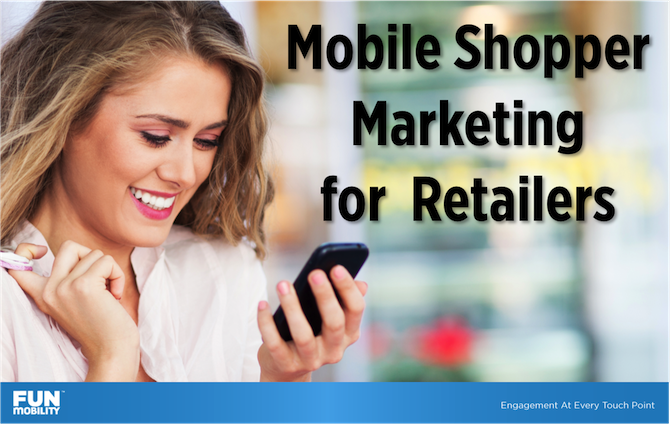Mobile Shopper Marketing for Retailers – Best Practices
These stats have been around long enough that you’ve probably already heard them a dozen times, but in the off-chance that you haven’t:
- 84% of smartphone owners use their phone to help shop while in a store
- The average shopper uses their phone for 15 minutes in-store, per visit
- Shoppers who frequently use their smartphones in-store spend 40-50% more
At least, that’s what the Google Shopper Marketing Council says. And I’m not gonna pretend that my department can match the sort of resources Google commits to market research.

When shoppers are in-store, they spend as much time looking at their phone as they spend looking at the products on the shelf
(image courtesy of the Google Shopper Marketing Council)
Moving into 2015, major retailers are upping their in-store mobile game to the next level, experimenting with near field communications (iBeacon), mobile payments, & augmented reality–meaning it’s more important than ever to control a piece of your shoppers’ in-store mobile attention.
Related:
eBook – Integrate Mobile With Shopper Marketing
So what’s the solution? Be practical and start simple. When it comes to mobile, simple is almost always better. Even major brands tend to get too complicated with mobile campaigns, expecting in-store shoppers to practice the same patient & relaxed behavioral patterns we see on desktop devices.
Go with the flow. Track the natural mobile behaviors of shoppers, and then align your in-store mobile strategy with those behaviors.
Related:
FunMobility Announces New Mobile Shopper Marketing Program for Retailers
Generating a positive consumer experience is all about reducing friction, and providing clear & concise calls to action. For example, if your strategy includes mobile coupons, then the coupon design shouldn’t drag the user through numerous levels to “unlock” the redemption code. The likelihood of redemption drops painfully with each additional action required of the consumer.
-
Every additional click required between point of discovery and point of sale drops redemptions by about 75%.
Outside the Store
That said, there are exceptions to this rule. High cash-value coupons, and coupons delivered close to point of sale, are both much more likely to be redeemed. But mobile coupons for low-consideration purchases, delivered while people are outside the store (in, say, an email), carry a naturally lower incentive—and also a lower redemption rate. In these cases, a higher-friction mobile experience is actually preferable, as crazy as it sounds, because it hits consumers in a context more appropriate for branding & content marketing.
For touch points existing outside the store—like via a paid mobile media campaign, for instance—a coupon alone typically isn’t compelling enough to drive conversions unless it offers exceptional cash value. You need to front-load that coupon with some sort of shopper activation trigger, like a product gallery, video, or mini-game.
Once you’ve successfully activated the shopping mindset in a relevant consumer, a mobile coupon then becomes a great follow-up to help with the transaction stage. If your ad trafficking solution can manage it, I’d even recommend delivering the digital coupon as part of a re-targeting campaign down the road, after you’ve already touched the consumer with an early awareness campaign.
Related:
Mobile Coupons White Paper – The Road to Redemption

